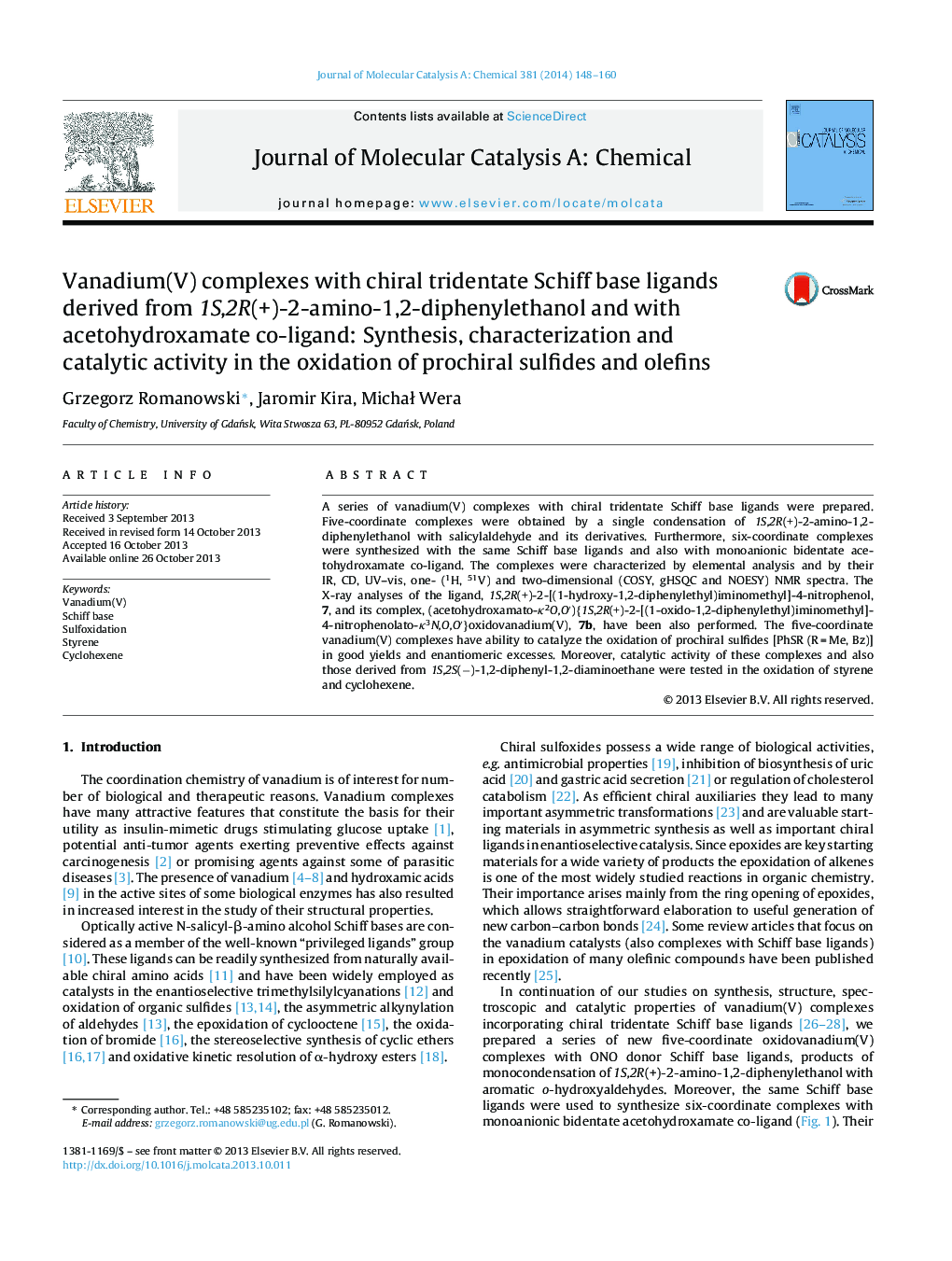| Article ID | Journal | Published Year | Pages | File Type |
|---|---|---|---|---|
| 65480 | Journal of Molecular Catalysis A: Chemical | 2014 | 13 Pages |
•New vanadium(V) Schiff base complexes were synthesized.•The complexes were characterized by IR, CD, UV–vis and NMR spectra.•The V(V) complexes have ability to catalyze the oxidation of prochiral sulfides.•These complexes are also catalytically active in the oxidation of olefins.
A series of vanadium(V) complexes with chiral tridentate Schiff base ligands were prepared. Five-coordinate complexes were obtained by a single condensation of 1S,2R(+)-2-amino-1,2-diphenylethanol with salicylaldehyde and its derivatives. Furthermore, six-coordinate complexes were synthesized with the same Schiff base ligands and also with monoanionic bidentate acetohydroxamate co-ligand. The complexes were characterized by elemental analysis and by their IR, CD, UV–vis, one- (1H, 51V) and two-dimensional (COSY, gHSQC and NOESY) NMR spectra. The X-ray analyses of the ligand, 1S,2R(+)-2-[(1-hydroxy-1,2-diphenylethyl)iminomethyl]-4-nitrophenol, 7, and its complex, (acetohydroxamato-κ2O,O′){1S,2R(+)-2-[(1-oxido-1,2-diphenylethyl)iminomethyl]-4-nitrophenolato-κ3N,O,O′}oxidovanadium(V), 7b, have been also performed. The five-coordinate vanadium(V) complexes have ability to catalyze the oxidation of prochiral sulfides [PhSR (R = Me, Bz)] in good yields and enantiomeric excesses. Moreover, catalytic activity of these complexes and also those derived from 1S,2S(−)-1,2-diphenyl-1,2-diaminoethane were tested in the oxidation of styrene and cyclohexene.
Graphical abstractFigure optionsDownload full-size imageDownload high-quality image (101 K)Download as PowerPoint slide
